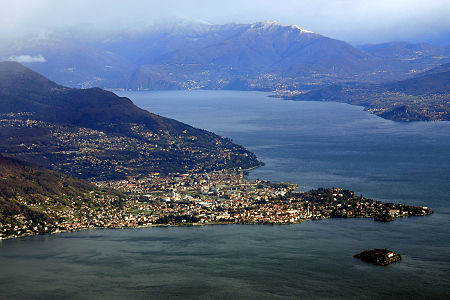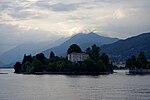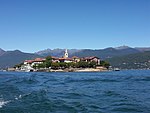Verbania
Cities and towns in PiedmontMunicipalities of the Province of Verbano-Cusio-OssolaPopulated places on Lake MaggioreVerbania

Verbania (Italian: [verˈbaːnja] (listen), Lombard: [ʋerˈbaɲa], Piedmontese: [ʋerˈbɑnja]) is the most populous comune (municipality) and the capital city of the province of Verbano-Cusio-Ossola in the Piedmont region of northwest Italy. It is situated on the shore of Lake Maggiore, about 91 km (57 mi) north-west of Milan and about 40 km (25 mi) from Locarno in Switzerland. It had a population of 30,827 at 1 January 2017.
Excerpt from the Wikipedia article Verbania (License: CC BY-SA 3.0, Authors, Images).Verbania
Corso Nazioni Unite,
Geographical coordinates (GPS) Address Nearby Places Show on map
Geographical coordinates (GPS)
| Latitude | Longitude |
|---|---|
| N 45.933333333333 ° | E 8.5333333333333 ° |
Address
Corso Nazioni Unite
Corso Nazioni Unite
28900 , Pallanza
Piedmont, Italy
Open on Google Maps








